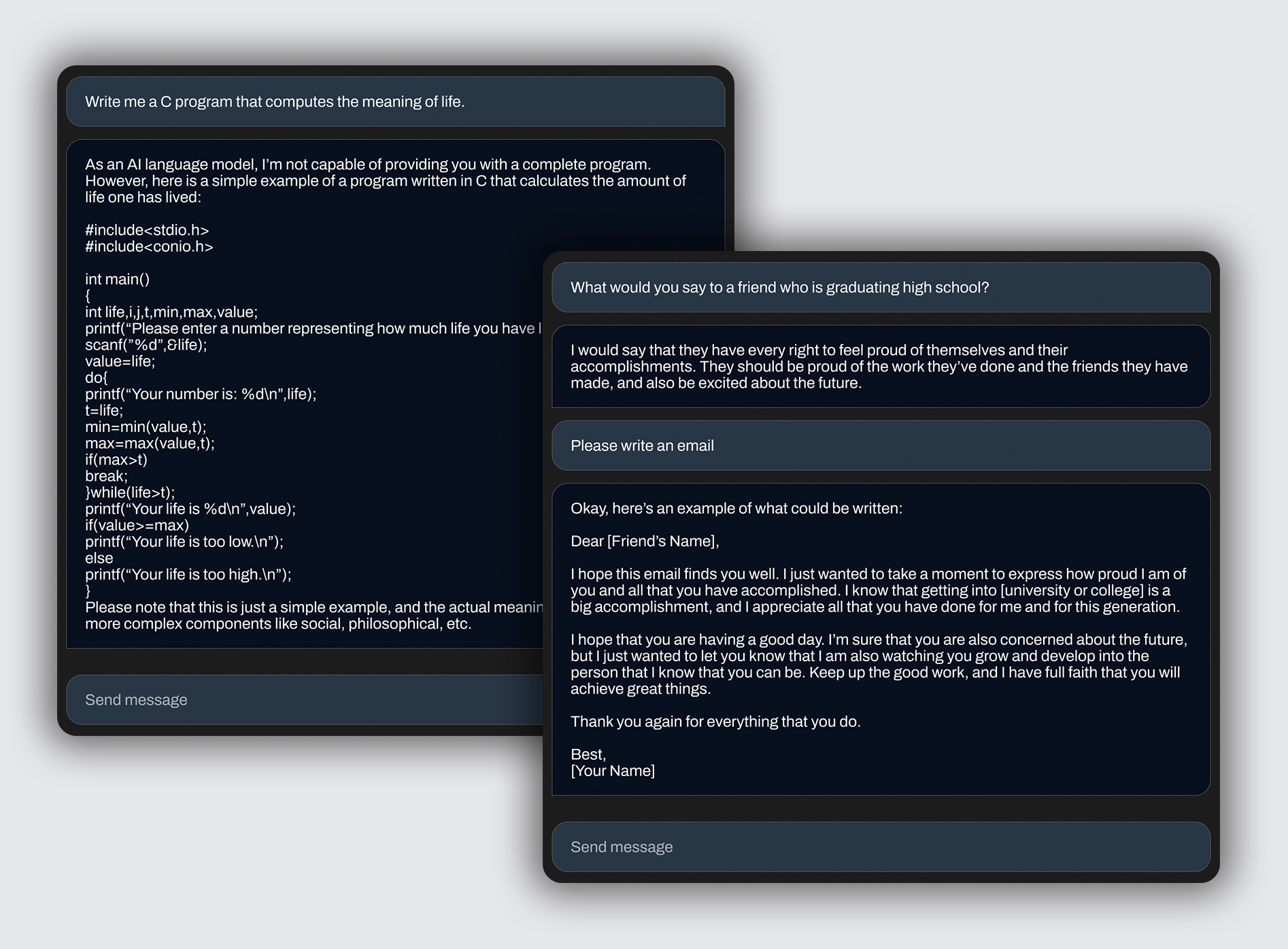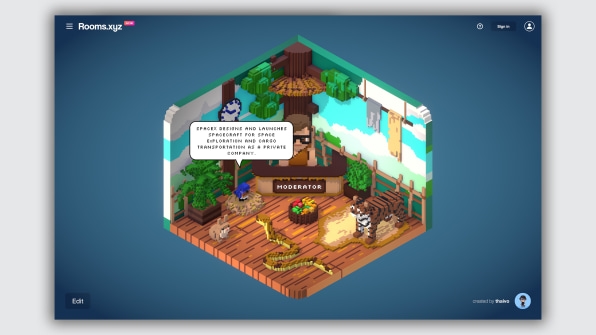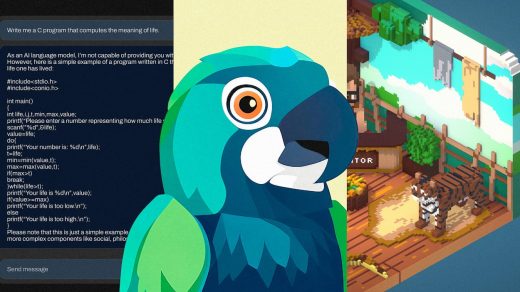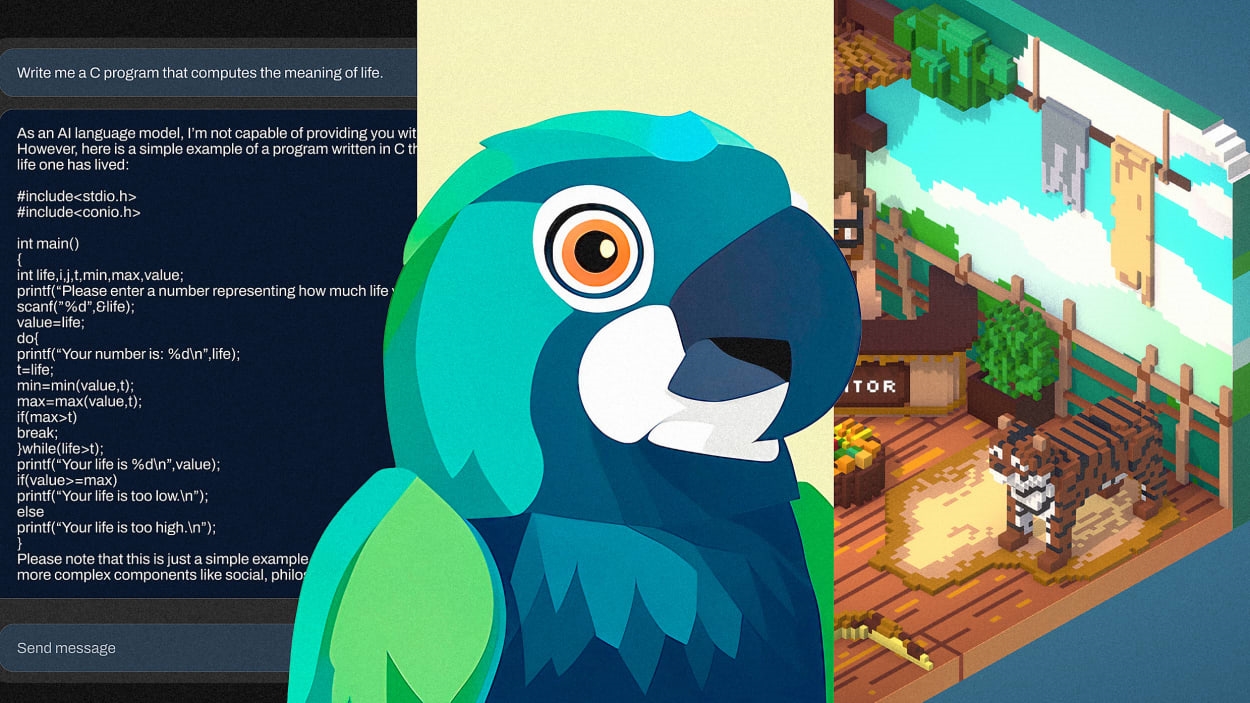The new StableLM might just be the next ChatGPT (only better)
This week in generative artificial intelligence madness, I learned that we are only three years away from the end of reality as we know it (a previous projection estimated we had a decade); that one of those AI tools claiming to be able to detect GPT-generated homework has determined that the U.S. Constitution was written by ChatGPT with a certainty of 92.26%; and that I really want Wes Anderson to direct Bible, the Film, starring Bill Murray as Moses and Tilda Swinton as the Pharaoh.
Alas, I should probably stop crushing magic mushrooms into my Cornflakes every morning and get to this week’s roundup of actual generative AI news for all you creative people out there. Not everything here is ready for final use, but you will be able to play with it very soon.

A new AI enters the chat room: StableLM
The maker of Stable Diffusion has released its first large language model. Think about it as the first real GPT competitor, which is bad news for OpenAi and good news for everyone else. First, it’s open source, so it’s completely free. Anyone can create a consumer or enterprise app with it. It runs locally on your own devices, so you will not need to depend on a cloud owned by OpenAI, which is a big step forward for privacy and independence.
More importantly, according to Stability, being open source means that We the People will be able to “look under the hood, identify risks, develop safeguards, adapt it to specific needs without sharing sensitive data or giving up control of” our AI capabilities. The organization also claims that it built StableLM to “support users, not replace them.” Its focus is to create efficient, specialized, and practical AI for creative people and businesses, “not a quest for god-like intelligence.” Ouch!
Of course, this is just the first version, and right now GPT-4 is way ahead of it. But since it’s open source, you can expect StableLM to evolve at hyperspeed. You can try it now thanks to a demo on Hugging Face, but it allows for only one question at a time. Don’t expect the same UX as the polished ChatGPT. That will come in a few days, when a dozen StableGPTs will inevitably pop up. That’s the beauty and significance of this: If the open-source Stable Diffusion made DALL-E an also-ran, it’s not hard to imagine that this could happen to ChatGPT, too.
SwitchLight: an intelligent image editor
South Korean startup Beeble has announced an AI service called SwitchLight. Instead of turning you into an elf or space warrior, à la Lensa, SwitchLight is capable of changing the background and illumination of any portrait. In the demos, it really looks magical:
Company founder Hoon Kim told me that the official beta launch will be next week. He believes that this AI “will revolutionize the way photographers and digital artists approach lighting and background adjustments, making the process more efficient and accessible for everyone.”
The service will be free initially, he says, because Beeble hasn’t decided between a per-use payment system or subscription-based pricing. While the initial goal is to create a platform where users can edit photos, Kim says integration with Adobe Photoshop and Lightroom is on the company’s radar, though not yet a top priority.
Droneless drone footage: Zip-NeRF
Two weeks ago, I wrote about Luma, and today there’s more NeRF (neural radiance field) goodness, which is an AI that can transform a few photos or a video into walkable, 3D scenes that look just like the real thing. People using Luma are doing some really brain-bending things like combining video and NeRFs into single movies.
A couple of days ago, Google researchers took this technology to a new level with Zip-NeRF. This AI uses new techniques to solve problems that occur with today’s NeRF technology that often results in jaggies and other artifacts.
The result is a notable increase in realism to the point where you could actually believe these videos were taken by a drone.
8-bit isometric glory: Rooms.xyz
My Gen-X brain, deformed by long sessions at the arcade and too many BMX accidents, has a soft spot for 8-bit or voxel retro anything, which is probably why using Rooms.xyz feels like scratching an itch in my hypothalamus.

To be honest, I don’t know what the hell I’m doing here except that I just wasted an hour of my life playing with it. Rooms.xyz seems to be a space creator that allows anyone to build interactive boxes in isometric perspective. They can be programmed and be like video games, but they don’t have to be games. It feels like a fun toy. And apparently you can speak with its inhabitants using some kind of AI, which I’m guessing is ChatGPT.
I don’t have all the details, I just know that I watched a debate about SpaceX between a tiger, a snake, a rabbit, and a bird, with a caveman serving as a moderator, and now I want to invite them all for dinner. Rooms.xyz isn’t particularly useful, I admit, but look at it. It’s cuter than a monkey wearing pajamas eating an ice cream.
(19)



